Find the best project management
software in minutes
In just 4 easy steps we help you find the most suited project management
software for your specific needs
The Best Project Management Software
Intro & Credentials
In today's dynamic work environment, selecting the ideal project management software is essential for achieving operational excellence. This article introduces a comprehensive analysis, blending expert insights and user reviews, to navigate the complex landscape of pm tools. We'll explore how the right project management software can revolutionize productivity, streamline task and resource management, enhance team collaboration, drive project success, and provide value within budget constraints. This guide will empower you to make an informed decision, ensuring the chosen solution aligns with your unique project requirements and business goals.
I'm Remus Zoica, the founder and chief editor of Software for PM. You may question my authority in advising you on project management software. Here's a glimpse into my qualifications: holding a bachelor’s degree in Information Technology has given me a deep understanding of software intricacies and project management dynamics. With over 15 years of experience managing teams since the early days of pm software's rise to prominence, I've extensively tested and scrutinized many platforms, assessing features and staying on top of industry trends. This hands-on exploration and a steady stream of requests for my recommendations ultimately inspired me to compile and share my findings in a structured format. Let’s dive into it!
1. Paymo

Paymo is best suited for small and medium-sized businesses, largely due to its comprehensive features centered around time tracking and invoicing. When team members consistently log their hours using the platform's tools, billing clients becomes a streamlined process facilitated by clicking a button. Clients receive detailed, automatically generated invoices, clarifying the services they are paying for. This makes Paymo particularly valuable for consultants, creative teams, and businesses that frequently work with clients. It offers robust project management capabilities, automated time tracking, and exceptional customer support and stands out as one of the most affordable PM software in its category.
However, it's worth noting that Paymo's communication features are somewhat limited, necessitating the use of external platforms like Slack for team interactions. For those prioritizing in-built communication tools, alternatives like Basecamp may be more suitable. Additionally, Paymo offers fewer integrations with other applications than competitors such as ClickUp, Asana, or Monday, which might be a consideration for complex businesses relying on a wide array of tools. Read more about it in my Paymo review.
Pros
Automated time tracking
Good invoicing features
Among the cheapest
Cons
Limited communication features
Small number of integrations
The number of features is average
2. ClickUp

ClickUp distinguishes itself as an exceptionally customizable PM software equipped with an extensive array of features designed to accommodate even the most complex and unconventional projects. It boasts advanced project management capabilities, including workflow automation, positioning it as a powerful tool for intricate project requirements. Like Paymo, ClickUp is known for its exceptional customer support.
However, ClickUp's complexity and abundance of features can also present challenges, such as a steep learning curve for new users. Additionally, users may encounter frequent bugs, user interface issues, and occasional downtime, which could impact productivity if you don’t really need such a big feature set. While ClickUp shares similarities with platforms like Monday and Asana, it prioritizes advanced functionality and the interplay between features over aesthetic appeal and user-friendliness. You should pay special attention to ClickUp's pricing structure because limitations may become apparent only after deeper engagement with the platform. For example, the advanced time tracking features are not included in the package designed for small teams, a detail that may not be immediately apparent unless you examine the features listed under the higher-tier packages. Read more about it in my Clickup review.
Pros
A high degree of customizability
Best value/price
Amazing customer support
Cons
Steep learning curve
Bugs, downtime, and distractions
Sneaky pricing tactics
3. Asana
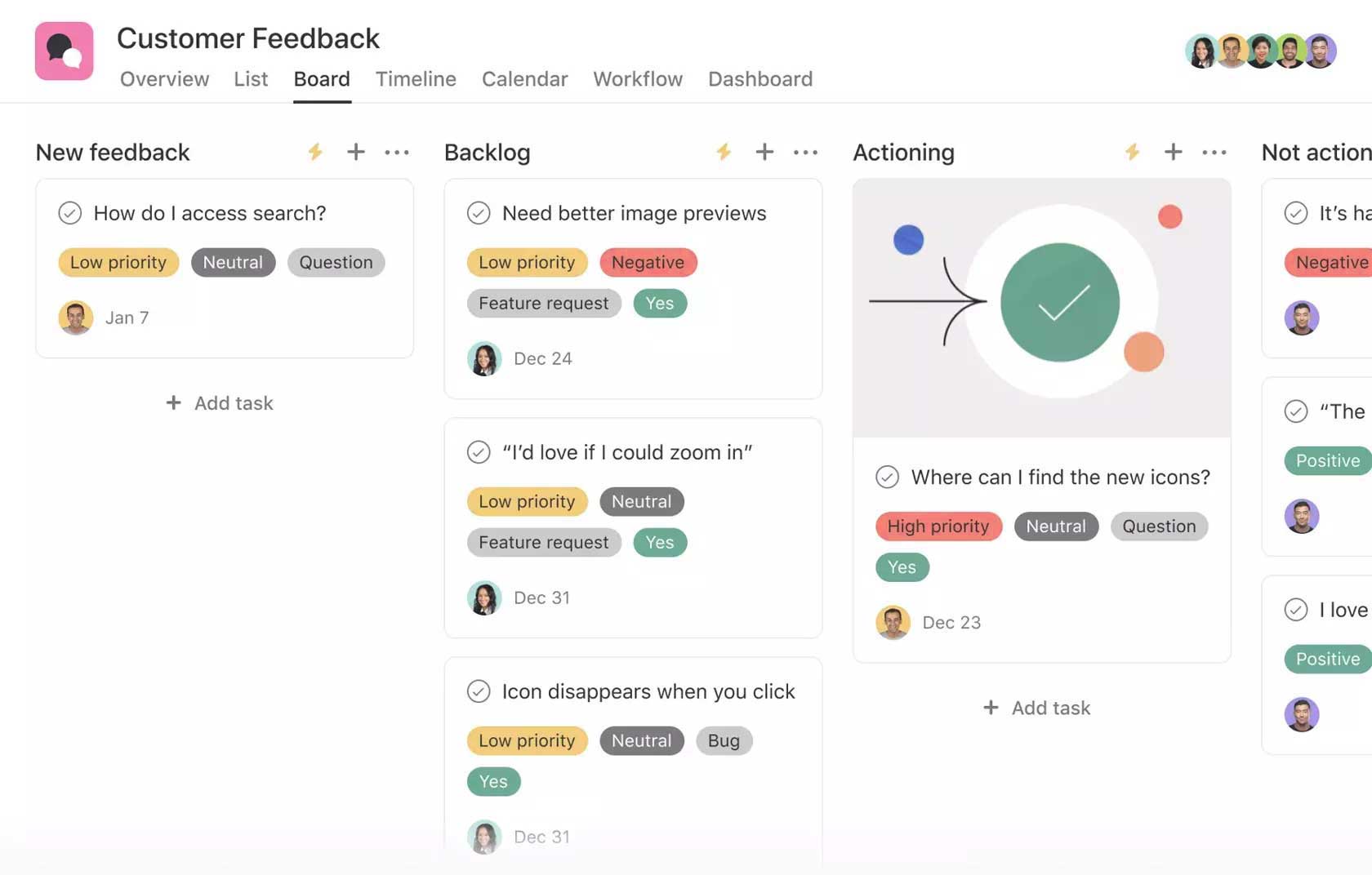
Despite boasting many features, Asana is one of the industry's most user-friendly and intuitive PM software. While opinions on its intuitiveness may vary, the majority view from their user reviews leans towards it being more user-friendly. This makes Asana particularly suitable for teams that may not be very tech-savvy, especially those that have not used any project management software before. However, it's worth noting that Asana has its limitations, such as the restriction of assigning a task to only one individual at a time, and its customization options don't quite match the breadth offered by platforms like ClickUp or Monday. Asana does excel in terms of integrations, offering over 250, which is a significant number in the project management sphere, and it stands out for its aesthetic design, making it one of the most visually appealing tools available. However, it's important to be aware that Asana's pricing is generally higher than its pm software competitors. Read more about it in my Asana review.
Pros
Among the easiest-to-use
Visually appealing interface
Many customization options
Cons
Higher than average price
One assignee per task
Reporting could be better
4. Monday
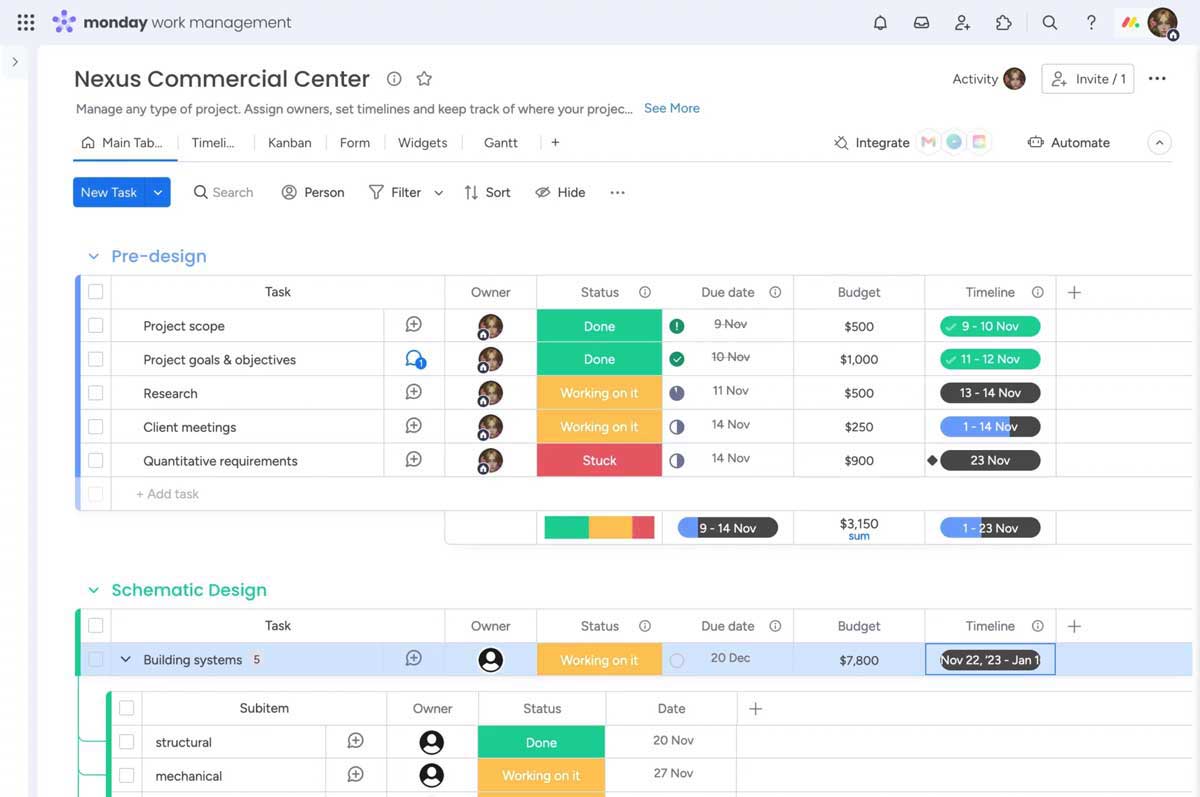
Monday.com stands out as one of the most visually appealing PM software, featuring a vibrant interface. It provides a wide range of features and a considerable level of customization, though not quite to the extent of ClickUp. In terms of intuitiveness, it is comparable to Asana, but it lacks the advanced time-tracking features found in Paymo. However, Monday.com offers flexibility in customization; you can add columns for status, deadline, and assignee and alter how you view your tasks to organize everything in a manner that optimizes your daily routine.
If you have specific needs and ClickUp doesn't suit you, Monday.com is a worthy alternative to consider. It also includes automation capabilities, a feature not commonly found in many of its competitors. A notable concern with the app is customer feedback regarding the support and live chat team. The mobile app has been described as slow and cumbersome, with users experiencing issues with the notification system, which can be somewhat confusing. Read more about it in my Monday review.
Pros
Visually appealing interface
A high degree of customization
Extended feature set
Cons
Support is unreliable
The mobile app could be improved
Limited time-tracking features
5. Basecamp
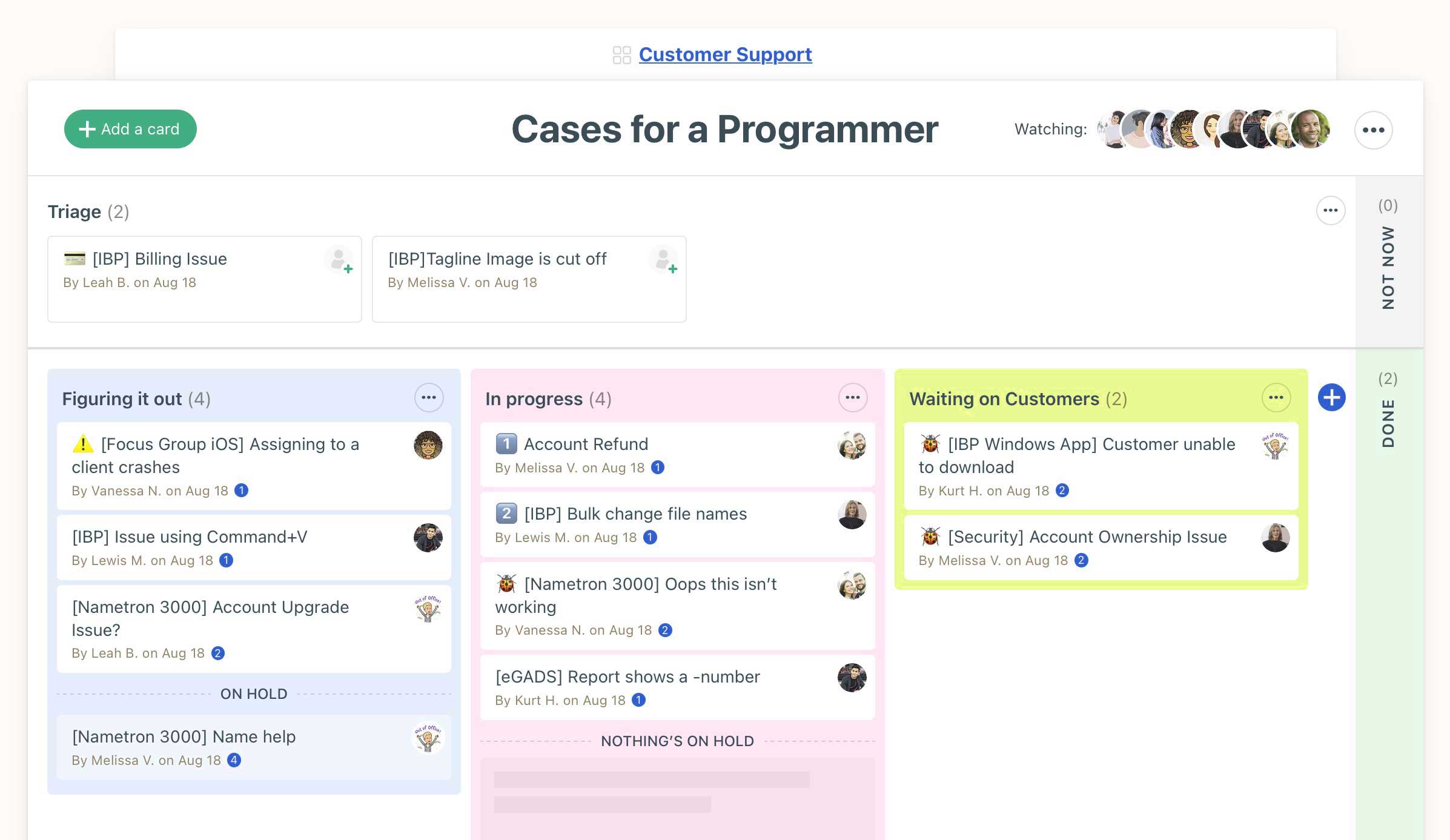
Basecamp is particularly well-suited for teams that prioritize communication and collaboration. For teams that don't already use communication tools such as Slack, Basecamp could be an ideal solution. This PM software has a built-in chat function, eliminating the need for external communication platforms like Slack. This integrated approach to communication not only simplifies interactions but also centralizes all project-related discussions, making it easier to monitor conversations and decisions.
However, Basecamp's limitations become apparent in the realm of customization, an area where platforms like ClickUp and Monday excel. Basecamp's search functionality is subpar, lacking robust reporting features and offering limited integrations with other tools. Its design is minimalistic, which can sometimes give it the appearance of a forum, and it does not offer advanced time-tracking features, which could be a significant drawback for teams that require detailed time management capabilities. Read more about it in my Basecamp review.
Pros
Minimalistic design/interface
Good for team communication
Good collaboration features
Cons
Limited customization options
No time tracking features
Limited reporting features
6. Podio

Podio stands out for small to medium-sized businesses needing a highly customizable project management tool. The platform allows users to create tailored workspaces and custom PM software with minimal coding by leveraging its extensive app marketplace. This flexibility enables businesses to build project management systems that precisely match their needs, from client records to task management workflows. Podio's user-friendly interface and robust collaboration features, like integrated chat and shared calendars, make teamwork seamless. The marketplace offers thousands of user-created apps, making it easy to find and integrate solutions for various business needs without starting from scratch.
However, Podio has some drawbacks. Users often report performance issues and a basic interface design that may not suit everyone. Compared to competitors like Asana and ClickUp, Podio updates less frequently, and setting up customized workflows can be time-consuming. The pricing model charges per employee per month but allows unlimited external users, which is beneficial for collaborations with clients or contractors. However, the need for additional extensions and integrations can drive up overall costs. Read more about it in my Podio review.
Pros
Highly customizable workspaces.
User-friendly interface.
Extensive app ecosystem.
Cons
Old school interface design.
Potential high setup time.
Less frequent updates.
7. ActiveCollab

ActiveCollab sets itself apart with a masterful blend of simplicity and powerful features. Its standout characteristic in the PM software industry is the minimalist design, which not only appeals visually but also significantly enhances user experience. In contrast to platforms such as Clickup, ActiveCollab deliberately limits customizability to prioritize ease of use and clear, direct interactions. The core strength of ActiveCollab lies in its seamless integration of design and functionality. It presents a clean, streamlined interface rooted in minimalist design principles, making it immediately accessible and user-friendly. Yet, beneath this simplicity lies a suite of advanced tools and features that users discover as they delve deeper.
ActiveCollab is perfectly suited for users who prioritize a clear, user-friendly interface and seek the ability to organize and prioritize projects and tasks effortlessly. In many ways is similar to Basecamp, but more visually appealing and with less focus on communication features. It is particularly appealing to individuals new to project management software and professionals who require only essential task management features. Read more about it in my AcativeCollab review.
Pros
Simple and easy to use
Rich feature set
Minimalistic style
Cons
Limited customization options
Challenging for big projects
One assignee per task
8. Freedcamp
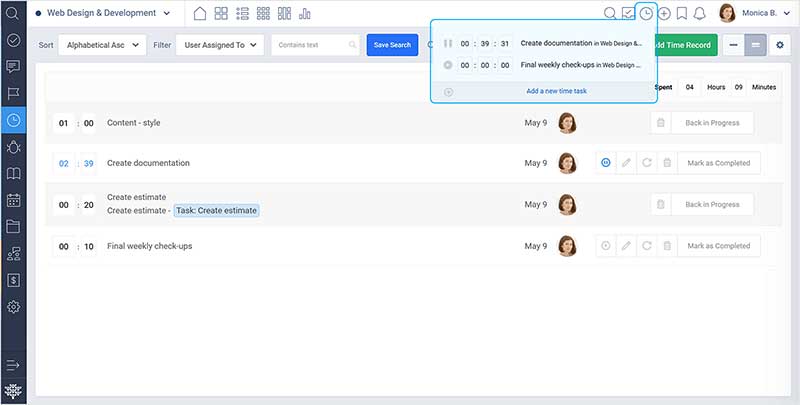
Freedcamp distinguishes itself as the most budget-friendly choice in the realm of PM software, boasting an exceptional free package that remains free indefinitely and encompasses all the fundamental features. This positions Freedcamp as an ideal entry point into project management for those hesitant to allocate a substantial budget or commit to long-term subscriptions for slightly lower annual rates. It serves as a more affordable alternative to Basecamp, catering specifically to those with limited options. However, Freedcamp's primary drawback is the absence of an onboarding process to guide users through the app's features and workspace. New users are left to navigate the platform on their own, with the option to consult the knowledge base, YouTube tutorials, or customer support for quicker orientation. This lack of initial guidance places Freedcamp lower on the list compared to competitors like Active Collab or Asana, which invest more effort in acquainting newcomers with their platforms.
Another significant concern is Freedcamp's mobile app, which is notably simplistic to the point of being unable to reorder tasks. For businesses that rely heavily on mobile accessibility, alternatives such as Monday or Wrike might be more suitable. While these competitors' mobile apps may not be without their flaws, they generally receive fewer complaints, making them a preferable choice for users who prioritize mobile functionality. Read more about it in my Freedcamp review.
Pros
Good free package
Cheapest in the market
Straightforward and clear
Cons
Very limited feature set
Lacks integrations
Limited time-tracking features
9. Hubstaff

Hubstaff is particularly well-suited for project managers seeking advanced employee monitoring and supervision capabilities beyond the functionalities of basic PM software. While it offers a respectable set of project management features, Hubstaff sets itself apart by providing in-depth employee oversight tools. It is capable of taking regular and frequent screenshots of employee screens, monitoring visited URLs, and tracking mouse and keyboard activity levels. Importantly, it does not log specific keystrokes but rather calculates an activity score to gauge productivity.
However, significant concerns arise regarding privacy and the methodology used to determine idle time, which may not accurately reflect activities that don't involve direct interaction with the keyboard or mouse, such as attending meetings or engaging in reading and research tasks. Hubstaff shares similarities with other platforms focused on employee monitoring and supervision, such as Timely, TimeDoctor, or WebWork, but its approach to tracking and measuring productivity can lead to debates about privacy and the valuation of various work activities. Read more about it in my Hubstaff review.
Pros
Takes regular screenshots
Monitors URL-s of employee computer
Monitors mouse and keyboard activity
Cons
Serious privacy concerns
Bugs & issues while tracking time
No keyboard or mouse activity = no work
10. Kantata (formerly Mavenlink + Kimble)
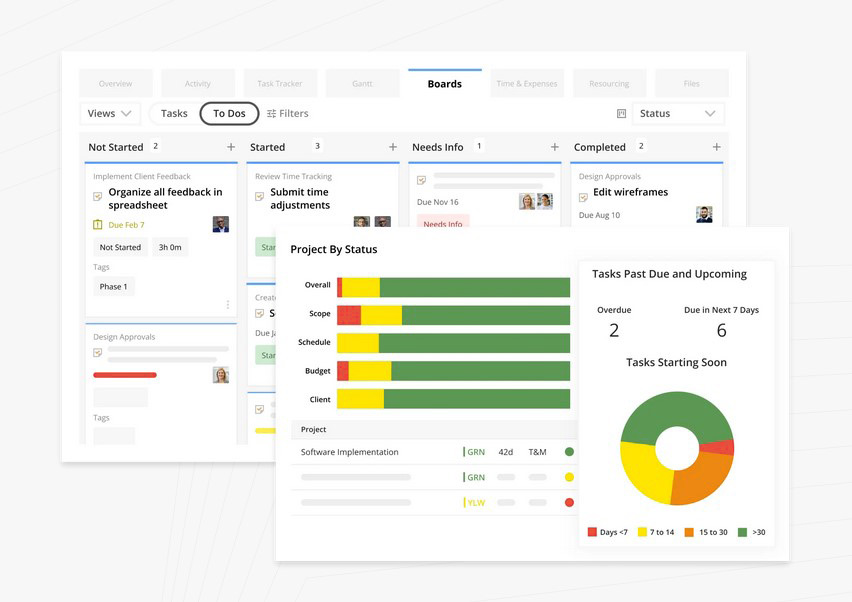
Kantata is tailored for professional services organizations, blending robust project management with advanced resource planning. Born from the merger of Mavenlink and Kimble Applications, it offers a comprehensive suite of tools aimed at enhancing operational efficiency. Kantata's customizable workflow templates and strong resource management capabilities make it an excellent choice for consulting firms, marketing agencies, and other service-oriented businesses. Teams benefit from detailed project tracking, compliance features, and excellent customer support, ensuring smooth project execution.
However, users often face a steep learning curve and report occasional performance issues. The pricing structure is higher and less transparent than many competitors, which can be a deterrent for some. While Kantata excels in resource management and reporting, its complexity might require significant initial investment in time and training. Despite these challenges, Kantata's frequent updates and proactive customer support contribute to its value, making it a worthwhile consideration for those needing specialized project management and resource planning tools. For professional services firms seeking detailed oversight and advanced functionality, Kantata remains a strong option to explore. Read more about it in this Kantata review.
Pros
Professional services focus.
Customizable workflow templates.
Robust resource management.
Excellent customer support.
Cons
Steep learning curve.
Occasional performance issues.
High & non-transparent pricing.
Complex reporting setup.
11. Flowlu

Flowlu is particularly beneficial for small businesses experiencing growth and beginning to need features typically found in high-end enterprise solutions. Its primary advantage is the centralization of business data and activities, offered at an attractive price point that is more accessible than standard enterprise solutions. Flowlu is user-friendly, catering well to teams that may not have extensive technical expertise. However, it may not fully meet niche requirements, whereas other PM software might excel with more specialized features. For instance, Paymo offers advanced time-tracking features, and Hubstaff is better suited for monitoring and supervising employees, making them more suitable choices for those specific needs. Read more about it in my Flowlu review.
Pros
Diverse set of features
Affordable price points
User-friendly interface
Cons
Missing some essential features
Task management could be better
CRM could be better
12. TrackingTime
![]()
TrackingTime stands out as an excellent choice for individuals and teams searching for a reliable time-tracking software backed by outstanding support. It shares similarities with Paymo regarding automated time-tracking capabilities and top-notch customer service. A distinctive feature of TrackingTime is its automated reminder system, which identifies when users have not completed their daily timesheets. The PM software then proactively sends reminder emails, encouraging users to log their missing hours. This feature particularly benefits those managing multiple tasks, ensuring time tracking remains current and precise, even amidst busy schedules.
However, some users have expressed concerns about the quality of the reports, suggesting that there is room for improvement in terms of clarity and usefulness. Additionally, the pricing structure has drawn criticism for being relatively high, especially when compared to the functionalities available in the free version, which some users find quite restrictive. Read more about it in my TrackingTime review.
Pros
Reminder messages
Automated time tracking
Amazing customer service
Cons
It could use more integrations
Reporting could be better
Pricing is on the higher side
13. WorkflowMax
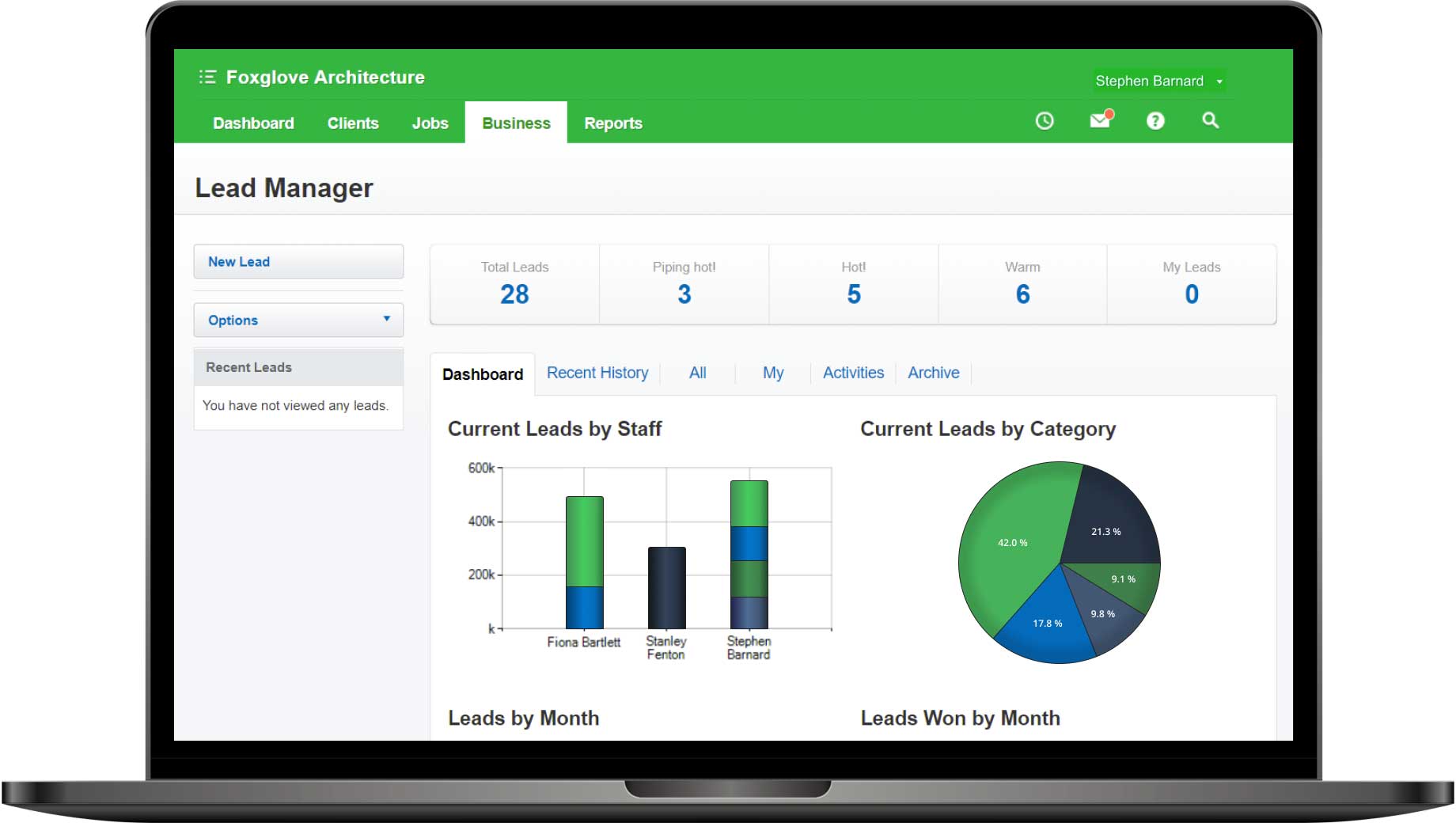
WorkflowMax stands out as a robust online PM software tailored to the diverse requirements of service-oriented businesses. It provides a holistic solution that integrates project tracking, time management, invoicing, job monitoring, and reporting into a unified platform. A notable feature of WorkflowMax is its extensive customization options and seamless integration with Xero, a widely used accounting software.
In an interesting twist, BlueRock, a firm renowned for its technology-centric business consultancy, has acquired the rights to the WorkflowMax name. They are in the process of developing a revamped job management tool, aptly named "WorkflowMax by BlueRock." This new iteration aims to retain the core functionalities that made Xero's WorkflowMax valuable, with an anticipated launch in February 2024. This development presents a viable option for former users of the original WorkflowMax seeking similar capabilities.
It's important to note that users of Xero's WorkflowMax will not be automatically migrated to the BlueRock version. The decision to transition is left to the discretion of each user. To assist in this process, BlueRock is devising a transition plan to facilitate a smooth migration for those opting to adopt their version of WorkflowMax. If you're considering this moment as an opportunity to explore other alternatives, here is my list of the best WorkflowMax alternatives.
Pros
Good for service-oriented businesses
Rich feature set
Native Xero integration
Cons
Limited integrations
Transitioning required
Uncertainty with the new version
14. Scoro
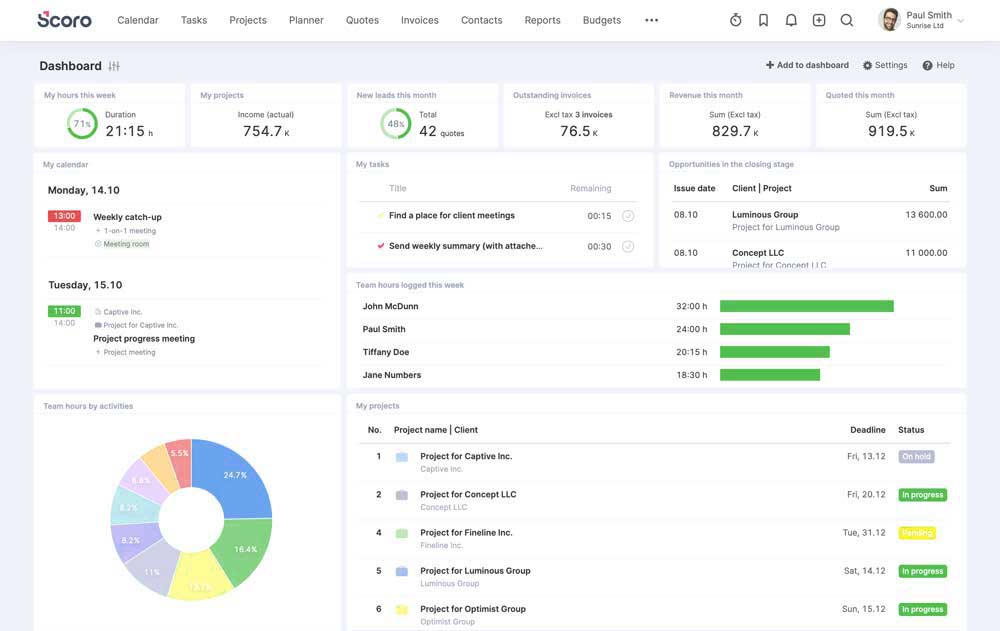
Scoro is PM software designed for large businesses and corporations, providing comprehensive PM and financial tracking features. The platform excels in managing complex projects with its integrated tools for tasks, budgets, and timelines. Its financial dashboards offer detailed insights, making it especially valuable for large construction firms, global marketing agencies, and consulting companies. Scoro's advanced security measures include Two-Factor Authentication, granular permissions, and encryption for all data interactions, ensuring robust data protection.
Despite its higher pricing and occasional technical issues, Scoro’s feature set justifies the cost for larger enterprises. The pm software’s monthly updates reflect its commitment to evolving user needs. However, it’s available only in English, and its steep learning curve can be challenging for new users. Compared to simpler tools like Trello or Asana, Scoro stands out with its corporate orientation, advanced financial management capabilities, and strong security measures, making it a top choice for large companies needing detailed project and budget oversight. It lacks workflow automation features found in competitors such as Clickup or Monday. Read more about it in my Scoro review.
Pros
Tailored for corporate users.
Granular permissions for security.
Comprehensive financial tracking.
Cons
Steep learning curve initially.
Higher pricing than many competitors.
Available only in English.
15. Redbooth

Redbooth is well-suited for small to medium-sized teams thanks to its straightforward setup and user-friendly interface. This pm software has a clean and intuitive design that makes it easy for newcomers to start managing tasks effectively, setting it apart from more complex tools like Microsoft Project. Redbooth excels in task management, allowing users to assign tasks, track progress, and prioritize work efficiently. Its tagging system further enhances task organization, making it ideal for teams handling multiple projects simultaneously.
Redbooth also shines in collaboration, with features such as workspaces for different teams and HD video meetings that facilitate seamless communication. This integrated approach ensures teams stay connected without needing additional tools, similar to how Basecamp promotes collaboration but with more robust task management capabilities.
However, the mobile app's reliability is a significant concern, as users report frequent crashes and performance issues. Additionally, Redbooth's limited file storage and infrequent updates can be limiting factors for teams needing more advanced features or extensive storage. Despite these drawbacks, Redbooth's easy setup and effective task management make it a valuable tool for teams seeking simplicity and efficiency in project management. Read more about it in my Redbooth review.
Pros
Easy to set up.
Simple & clean interface.
Good for task management.
Cons
Unreliable mobile app.
Limited file storage.
Less frequent updates.
----------
16. Microsoft Project

Microsoft Project is tailored for large enterprises with its advanced project planning and detailed resource management capabilities. Its standout features include interactive Gantt charts and automated task scheduling, making it ideal for meticulous project tracking. Integration within the Microsoft ecosystem—Excel, SharePoint, Teams, and Outlook—facilitates seamless data sharing and collaboration, enhancing team productivity.
However, Microsoft Project does come with a few drawbacks. The steep learning curve and high cost can be prohibitive for smaller teams or individual users. Many have found the interface outdated and less intuitive compared to modern pm software like Asana or Trello. Additionally, it offers limited third-party integrations, which may pose challenges for businesses relying on various software tools.
For those heavily invested in the Microsoft ecosystem, the seamless integration and advanced features of Microsoft Project make it a valuable asset. Its professional reporting and dashboards save time and ensure consistency, which is ideal for stakeholders needing clear project updates. While it may not be the best fit for small businesses or those looking for simpler, more affordable solutions, it remains a robust option for large enterprises managing complex projects. Read more about it in my Microsoft Project review.
Pros
Advanced project planning tools
Detailed resource management
Seamless Microsoft ecosystem integration
Cons
Steep learning curve.
High cost for small teams.
Outdated interface
17. Trello

Trello is a highly popular option for small to medium-sized enterprises, particularly favored for its uncomplicated interface and visual approach to project management. Teams find it easy to manage workflows using Trello’s Kanban boards, where tasks are visibly moved from inception to completion, streamlining the process at every stage. This setup is not only simple but also adaptable, allowing users to customize their boards to reflect various stages of their workflows. Consequently, Trello is particularly appealing to creative agencies, freelancers, and small tech startups who value flexibility and ease of use over complex functionality.
However, Trello does have its drawbacks. The tool’s simplicity and limited integration capabilities mean it might not be the best fit for larger organizations or projects that require detailed reporting and advanced project management features. For teams that need more sophisticated communication tools integrated directly into their pm software, platforms like Slack might be necessary to fill the gap. Additionally, while useful, Trello’s customization features do not match the depth offered by more comprehensive platforms like ClickUp or Monday, which could be a deciding factor for teams needing more tailored solutions.
In essence, Trello offers a user-friendly, visually-oriented project management tool that is easy to pick up and start using immediately, making it an excellent choice for those who prioritize straightforward, effective task management. However, those requiring more detailed project controls and integration options might consider looking at other tools that offer more advanced features. For more insights, delve deeper into my comprehensive Trello review.
Pros
Simple and intuitive design.
Minimal learning curve.
Excellent visual organization.
Cons
Lacks advanced project features.
Customization can be insufficient.
Extra costs for add-ons.
18. Jira

Jira is particularly well-suited for software development teams and those who use Agile methodologies. It excels in environments requiring detailed issue tracking and automation, making it indispensable for developers and testers. Its advanced bug tracking and ticketing capabilities streamline workflows, allowing teams to efficiently manage tasks, bugs, and epics with real-time collaboration. Agile teams benefit from Jira's customizable Scrum and Kanban boards, sprint planning tools, and comprehensive reporting features, such as burn-down charts and velocity charts, which help track progress and pinpoint areas for improvement.
On the downside, Jira has a steep learning curve and can be overwhelming for new users, especially those without technical backgrounds. The initial setup and customization can be time-consuming, often requiring significant effort to tailor the platform to specific project needs. For those who prioritize ease of use and quicker setup, alternatives like Trello or Asana might be more appealing. Moreover, Jira's complexity can be a hurdle for non-technical teams, who might struggle to navigate the platform effectively.
Despite these challenges, Jira's powerful features and extensive customization options make it a top choice for teams that need a detailed and flexible pm software. Its effectiveness in tracking issues, managing sprints, and fostering collaboration ensures that projects stay on track and team members remain accountable. For those willing to invest the time to master it, Jira offers solid capabilities in project management. For more insights, delve deeper into my comprehensive Jira review.
Pros
Excellent bug-tracking capabilities.
Strong Agile support features.
Extensive customization options.
Cons
Steep learning curve.
Overwhelming setup process.
Not appealing to non-technical users.
19. Wrike

Wrike is an excellent choice for businesses that require detailed task management and advanced customization options. Thanks to features like task dependencies and automation, it shines in its ability to handle complex projects with multiple moving parts. This makes Wrike particularly useful for large consulting firms, tech startups, and game development studios that need to track numerous tasks and ensure timely project completion. The platform’s advanced automation capabilities reduce manual efforts, allowing teams to focus on strategic activities.
However, Wrike has a steep learning curve and an overwhelming number of features, which can be daunting for new users or those who prefer a simpler interface. The time tracking features are very basic, which might not meet the needs of teams that rely heavily on detailed time monitoring. Comparatively, tools like Paymo offer more advanced time-tracking functionalities. Additionally, while powerful, Wrike's extensive customization options require significant effort to be set up and utilized effectively.
Despite these challenges, Wrike's strong customer support and highly customizable workspace make it a top contender in the pm software space. Its ability to centralize task management and automate workflows provides a comprehensive solution for both small and large teams. Wrike excels in helping teams juggle multiple tasks and projects simultaneously, ensuring nothing falls through the cracks, and every detail is tracked and managed efficiently. For those willing to invest the time to master its complexities, Wrike offers significant advantages in managing and optimizing project workflows. For more insights, delve deeper into my comprehensive Wrike review.
Pros
Excellent task management.
Advanced automation features.
Strong customer support.
Cons
Steep learning curve.
Overwhelming number of features.
Limited usability enhancements.
20. Notion
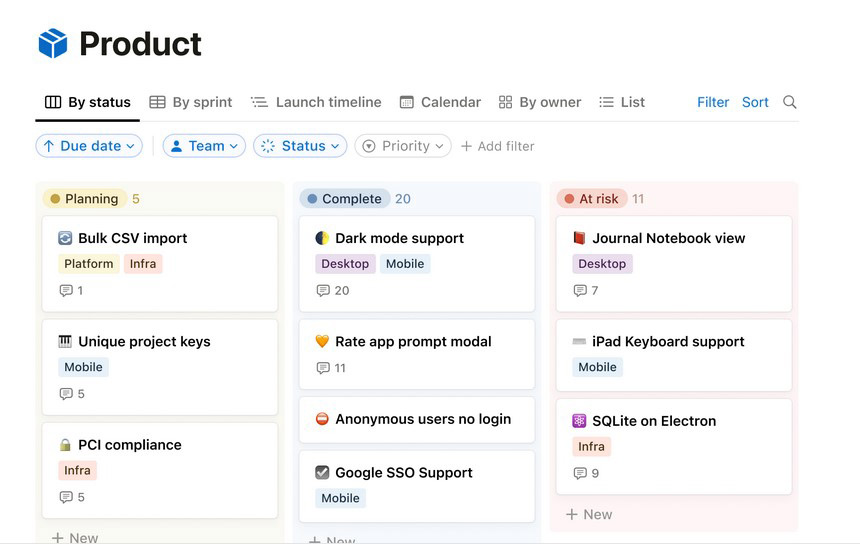
Notion is ideal for those who prefer a personal-centric approach to project management. Unlike traditional tools that rely on rigid structures and predefined workflows, Notion starts with personal notes and information at the core of its functionality. This allows users to gradually build their business operations around their personal data, making it a natural extension of their daily workflow. This approach is particularly beneficial for event planning companies, academic research teams, and personal development coaches who need to manage a lot of information seamlessly.
However, Notion has its limitations. It lacks some advanced project management features that other tools offer by default. Users often find the platform’s performance inconsistent, with reports of slowness and occasional crashes. Additionally, the cost of accessing Notion’s AI capabilities is high, which can be a drawback for those on a tight budget. Customer support has also been noted as inconsistent, with some users experiencing delays in response times.
Despite these challenges, Notion’s strong customization options, seamless AI integration for information retrieval, and user-friendly design make it a standout choice for those looking to combine note-taking with pm software. Its search capabilities, enhanced by AI, allow users to quickly find and retrieve specific information from their notes, making it incredibly efficient for managing large volumes of data. Users can link related content and create structured workflows, providing a comprehensive solution for organizing everything. For those willing to invest time in customizing their workspace, Notion offers significant advantages in managing both personal and professional projects. For more insights, delve deeper into my comprehensive Notion review.
Pros
Best note-taking features.
Best search function (AI).
Highly customizable templates.
Cons
Limited advanced PM features.
High pricing for AI.
Inconsistent customer support.
----------
21. Toggl Plan

Toggl Plan caters well to small teams, freelancers, and businesses with high employee turnover. Its standout features include visual workload management and seamless integration with Toggl Track, making time tracking a natural part of the project planning process. The platform's intuitive, minimal design prevents users from feeling overwhelmed, which makes it particularly appealing to those who want to keep project management straightforward. Many users praise how easily they can see overlapping tasks and manage workloads visually, which is not as common in more complex tools.
That said, Toggl Plan does have limitations. There’s no task automation, and it lacks some advanced features such as financial forecasting or task exports. Users looking for built-in communication tools might find it lacking, especially compared to alternatives like Basecamp. Also, the mobile app receives mixed reviews due to missing features.
For teams needing basic, visual project management with easy time tracking integration, Toggl Plan is a solid, lightweight option. However, for those requiring more comprehensive features, tools like Asana or ClickUp might be worth considering. Read more about it in my Toggl Plan review.
Pros
Simple, intuitive interface.
Seamless Toggl Track integration.
Visual workload management.
Cons
No task automations.
Lacks advanced project tools.
No comprehensive financial features.
22. Smartsheet
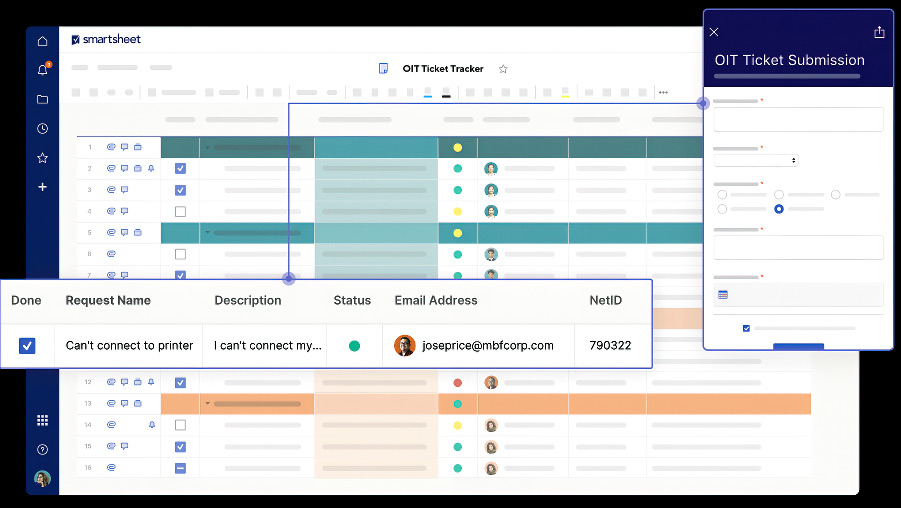
Smartsheet is a strong choice for teams transitioning from Excel or Google Sheets, offering a familiar grid-like interface while introducing project management features that go beyond standard spreadsheets. Its real-time collaboration tools and automation capabilities make it a popular option for teams needing streamlined communication and task management. Smartsheet’s templates help reduce setup time, which is especially useful for repetitive tasks, and its ease of use means minimal training is required, particularly for those with prior Excel experience.
While Smartsheet excels in project tracking and team collaboration, it does have limitations. It lacks native time tracking and invoicing features, and its customization options can be restrictive compared to competitors like Paymo or Teamwork. Users needing advanced resource management or more detailed project control might find other tools better suited to their needs. Read more about it in my Smartsheet review.
Pros
User-friendly grid-like interface.
Easier learning curve for Excel users.
Real-time collaboration features.
Cons
Limited feature set.
Limited customization options.
No time tracking or invoicing.
23. Teamwork

Teamwork is particularly well-suited for businesses that work with multiple clients, thanks to its powerful time-tracking and invoicing features. It allows teams to easily track billable hours and generate invoices based on employee time, streamlining client management. Teamwork’s comprehensive task management, project templates, and real-time communication tools make it a strong choice for teams handling complex projects. Marketing agencies and consulting firms benefit significantly from these capabilities, as the platform simplifies tracking efforts across various campaigns or client engagements.
While Teamwork offers a vast feature set, this richness comes with a steep learning curve. Many users report that the system can feel overwhelming, particularly for new users or those managing smaller projects. Additionally, some have mentioned performance issues, with occasional lags and bugs. Notifications can also become excessive, making it harder to focus.
For teams that can handle the initial complexity, Teamwork provides excellent value, especially for client-based work. However, those seeking a more simplified experience might consider alternatives like Basecamp or Paymo. Read more about it in my Teamwork review.
Pros
Extensive feature set.
Good value / price.
Good for working with many clients
Cons
Steep learning curve.
Performance can be slow.
Frequent bugs reported.
24. Zoho Projects

Zoho Projects is an excellent option for small to medium-sized businesses, especially those already using the broader Zoho ecosystem. Its seamless integration with Zoho CRM and other Zoho tools allows for a smooth workflow, ensuring that project updates and customer information remain aligned. The intuitive interface and affordable pricing make it easy for teams to get started with minimal training, making it ideal for businesses looking for a straightforward, budget-friendly solution. Zoho Projects includes built-in time tracking, customizable project templates, and collaborative tools that simplify project management.
However, users who rely on non-Zoho tools may find the platform’s limited integration capabilities a drawback. The lack of advanced automation and customization options also makes Zoho Projects less suitable for managing complex projects compared to other tools like ClickUp or Monday. Additionally, the system’s performance can slow down when handling large projects. For teams already invested in the Zoho suite, Zoho Projects offers great value for money and reliable project management features. Read more about it in my Zoho Projects review.
Pros
Zoho ecosystem integration.
Intuitive, user-friendly interface.
Affordable pricing structure.
Cons
Limited customization options.
Reliant on Zoho products.
Challenges with complex projects.
25. Hive

Hive is ideal for teams seeking a flexible, community-driven project management tool. Built around user feedback, Hive evolves based on the features users vote for, ensuring the platform addresses real-world needs. This approach makes Hive particularly attractive to teams that value a tool that adapts to their specific challenges. Its standout features include customizable templates, proofing tools, and strong task automation capabilities through action cards, which streamline workflows and enhance team productivity. Hive also offers regular updates based on user requests, ensuring a constantly evolving platform.
However, Hive’s complexity can be overwhelming for new users. Many find the steep learning curve challenging, especially when transitioning from simpler tools like Trello. Notifications can also become excessive, making it harder to focus. For teams that prioritize a user-driven approach and need flexible project management features, Hive offers great value. Read more about it in my Hive review.
Pros
Community-driven feature development.
Strong proofing and approval tools.
User-friendly action cards feature.
Cons
Steep learning curve for newcomers.
Limited project scalability on basic plan.
Limited customization for niche needs.
Final thoughts:
Navigating the labyrinth of project management software options can be daunting, but armed with the insights and analyses provided in this article, you're better equipped to make an informed decision that aligns with your unique business needs and goals. From the detailed breakdown of each tool's strengths and weaknesses to the exploration of their specialized functionalities, this guide has aimed to illuminate the path toward selecting the right software that not only matches your project requirements but also enhances your team's productivity and collaboration.
The diverse landscape of project management tools, from Paymo's invoicing prowess to ClickUp's customization capabilities, Asana's user-friendly interface, and Monday's vibrant design, highlights the importance of understanding the specific needs of your team and projects. Moreover, the emergence of platforms like Scoro and Redbooth, which extend beyond traditional project management to incorporate business management and robust communication features, reflects the evolving nature of work and the increasing demand for multifunctional tools.
Written by Remus Zoica




